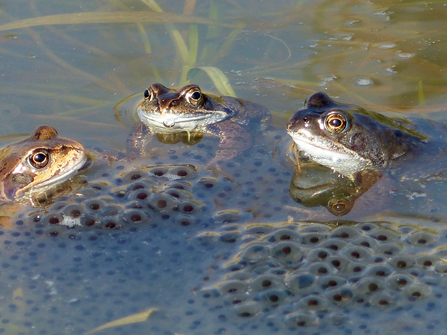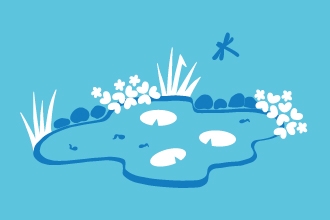After we’ve planted new woodland and encouraged natural regeneration of scrub across Green Farm, phase two of the restoration project will be a lot wetter! This is where I’m fully out of my comfort zone as I’ve never had a proper grounding in creating wetland habitats before. So I’ll be approaching this with caution, which is partly why I’m leaving it for a while so that I can observe the lie of the land and take the time to plan.
Water is a mysterious thing to me. Sometimes, during rainy weather, I find it running off the land in torrents where I’ve never seen as much as a trickle before. Sometimes pools appear as quickly as they fade away. At other times the landscape of the past reappears briefly as rainwater collects in shallow hollows that were once ponds. In a time where there were no water pipes to feed cattle troughs, these in-field ponds would’ve been vital sources of water for livestock. As farming methods changed, the need for these watering holes disappeared and as vegetation encroached, many of the ponds disappeared too. Two ponds that still hold water survive at Green Farm compared to the seven that perhaps once existed.
Looking at the old maps of Green Farm doesn’t help us much when looking for old ponds. The largest ponds were recorded but I suspect many smaller ponds weren’t. Searching on foot in the winter, however, is much more rewarding! You have to get your eye in but, after a while, it’s quite easy to spot hollows that are roughly circular and usually on the field edge. They are almost always where you’re most likely to lose a welly if you walk through after heavy rain!
Most of the time, as you'd perhaps expect, they’re found in the lowest part of the field. But in a couple of fields at Green Farm, there are hollows on the highest part of the field. Whether these were ponds, clay pits or something else entirely, we don’t know yet.






